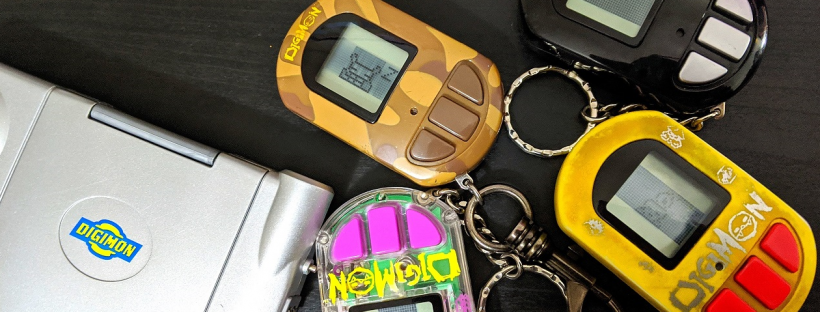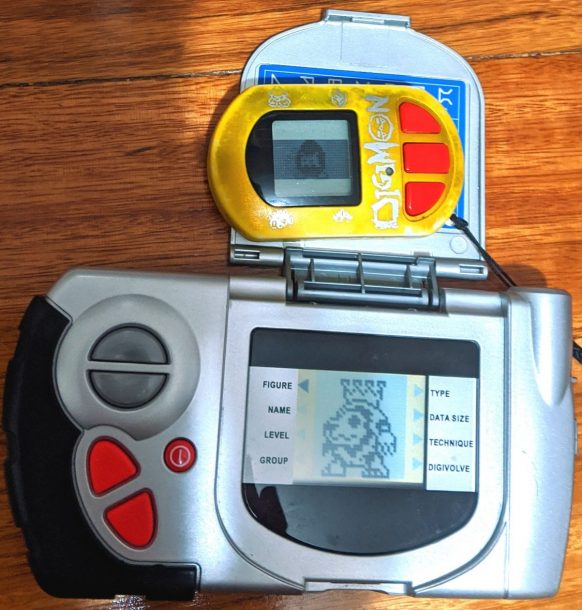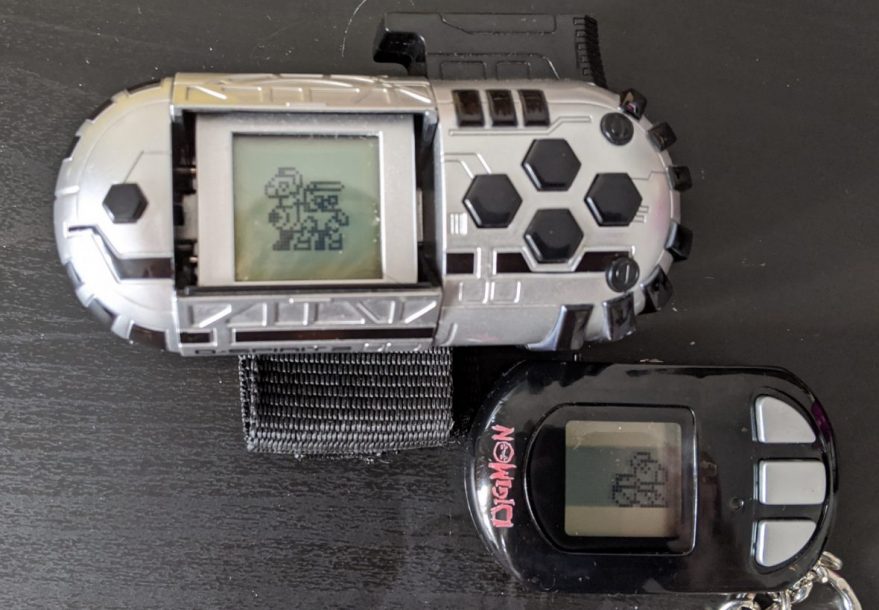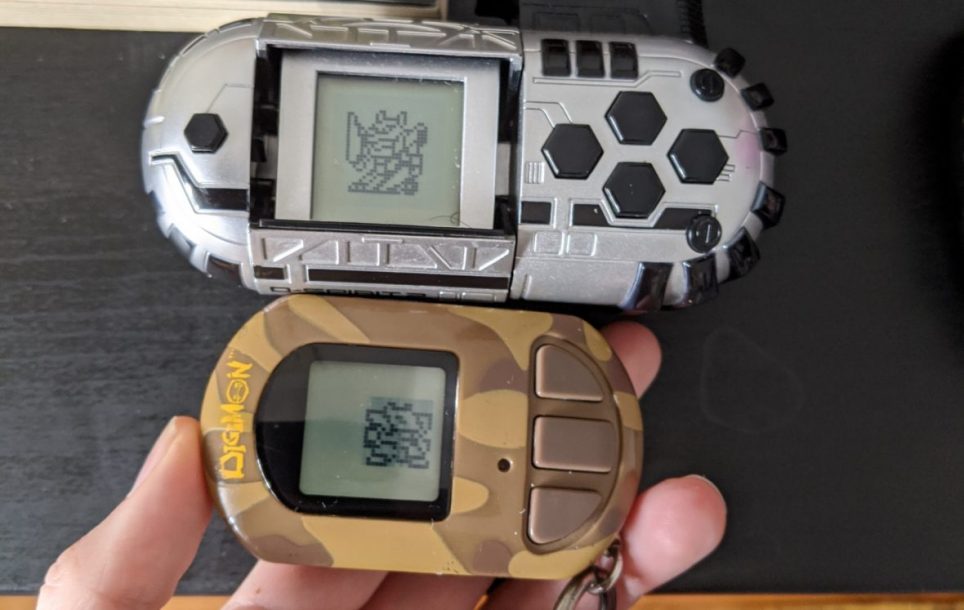Bandai Asia released a lot of unique virtual pets in the early 2000s, one of these releases is the annoyingly frustrating Cycle.
However, there’s not much information on this toy outside of what I have written, so I thought it was time that I write this Digimon Pendulum Cycle Guide that will hopefully help virtual pets fans and collectors work out what exactly this weird little virtual pet is and what it has to offer.
What is the Digimon Pendulum Cycle?
First of all, let’s have a bit of a background into what this virtual pet is; The Digimon Pendulum Cycle is the Bandai Asia release of the Digimon Pendulum Original (PenOG), and treated as a continuation of the Digital Monster series of virtual pets.
Often, the version 6 of the Digital Monster Original (DMOG) is listed as a cycle as it was the Bandai Asia release of the first version of the PenOG, however, the version 6 has the same mechanics as the DMOG and doesn’t include any of the unique mechanics introduced in the Cycle.
The four versions (not including the version 6 DMOG) are; Version 7 (Deep Savers), Version 8 (Nightmare Soldiers), Version 9 (Wind Guardians), and Version 10 (Metal Empire). The first two versions were released in packaging that more closely resembled the packaging for the DMOGs that Bandai had already released in Asia and Australia while the versions 9 and 10 had plastic blister packaging.
The shells that these virtual pets were not the same shape as the DMOG nor the PenOG and featured a unique shell design. Interestingly, the shell design for the version 8 has decorative sprites of Digimon that are not available in that version, but are in the version 7. Each version’s shell uses different colours – the version 7 uses blue or clear translucent shells with different coloured buttons and decorative sprites around the border of the screen as well as the Digimon logo in big font, the version 8 uses a single, mostly metallic-like opaque colour for the shell with decorative sprites around the screen and the same logo as the version 7, the version 9 uses various translucent colours for the body and includes a smaller font DIGIMON logo but with no decorative sprites, and the version 10 uses opaque camo-style colouring with the same logo as the version 9.
Another interesting thing to note about the shells of these toys is that the decorative sprites on the versions 7 and 8 are the same, however, none of the Digimon appearing in these sprites are raisable Digimon on the version 8, only in the version 7.
Also, the sounds used are the same as the D-Tector Digivice, so that’s fun.
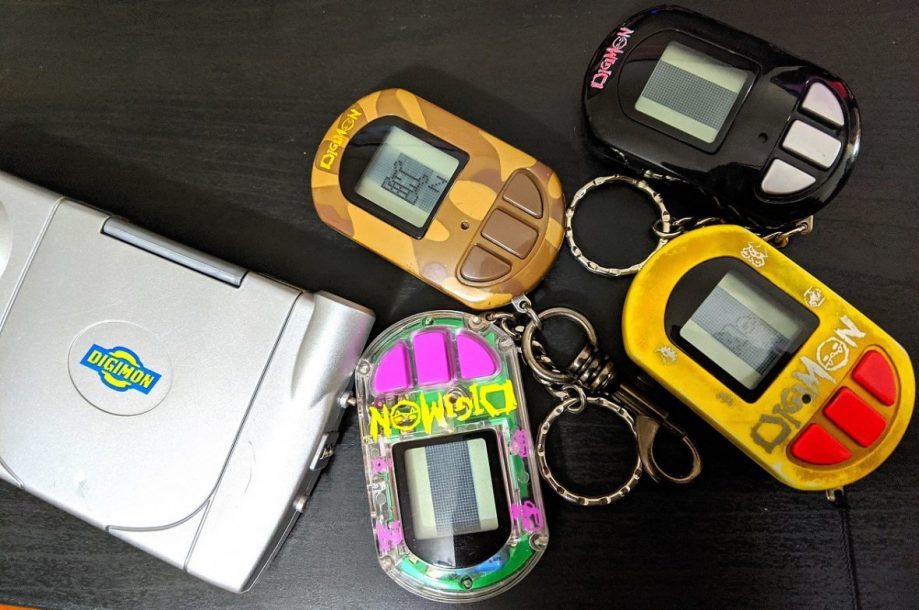
The Cycle’s main features are unique in terms of what other virtual pets have to offer; a sped up life cycle which allows the Digimon to hatch and evolve all the way to Super Ultimate in the same day (but also the possibility of not evolving past child if conditions are not met during the day, the reverting back to Child/Rookie level at bed time every day, an alarm where you can prompt your Digimon to wake up earlier, random encounters throughout the day (these do not appear to impact evolution), and, weirdly, a new evolution requirement – weight ranges.
The Cycle also was compatible with the D-Terminal toy as well as Bandai Asia’s continuation of the D-Terminal series (as in, the D-Gather and D-Spirit 1 and 2).
These toys also included extra Digimon that were not raisable in the PenOGs. These were Super Ultimates such as a few Ancient Digimon as well as Digimon such as Valkrimon and even Moon=Milleniumon!
A few of the Digimon that appeared on the Cycle were not raisable on any other virtual pet until the Digimon Pendulum Z’s release, and some are still not raisable to this day (Suijinmon, for example)!
An additional change is that feeding meat to a Digimon is actually the ‘strength’ feedable item on the cycle (instead of vitamin/protein as in other virtual pets) and the ‘hunger’ item is bread. Personally speaking, I actually like this change as you have your ‘carbs’ (bread) and your ‘protein’ (meat). Also, it means that you could theoretically raise a ‘vegetarian’ Digimon, which is an interesting take, to say the least.
Another interesting thing to note is that, once your Digimon dies, you get a rating which seems to be determined by how well you took care of you Digimon. However, as of writing this, there is no data to determine if this leads to something similar to a traited egg or if it’s just completely meaningless.

Something weird that you can probably tell from the images in this guide is that the Version 10 appears to have a worse screen than the other versions – every version 10 has been like this. However, I’ve seen green camo version 10s which look fine. So it may just be luck.
With the introduction out of the way, let’s move onto the Digimon Pendulum Cycle Guide….
Digimon Pendulum Cycle Guide and Features
Now we’ve been introduced to what this virtual pet is and what’s so special about it, let’s get start covering how this virtual pet works…
The Digimon Pendulum Cycle’s Training System
The training system on this toy is similar to the system in the PenOG – shake the toy and each shake count with yield a different result for each Digimon.
Each version has the same training mechanically, however, each version has a different animation that plays; in the version 7, your Digimon attempts to break through a wall, in the version 8, your Digimon charges forward and attempts to break a rock, in the version 9, your Digimon fires a fireball and the distance it travels is measured, and, in the version 10, your Digimon attempts to lift a boulder (which the displayed weight of this boulder, interestingly, varies depending on the level your Digimon is).
Besides the usual training, another option is to fight a random Digimon. However, from my findings, battles do not seem to impact evolution. These are similar to the random encounters that occur throughout the day and feature Digimon available in the Cycle series.
In terms of evolution requirements, it seems to be required to meet the perfect number of shakes at least twice in order to evolve to the next stage (not including evolving from Baby 1 to Baby 2 or from Baby 2 to Rookie/Child). However, this is something that needs testing. The main importance of training and battling is to reduce your Digimon’s weight. Which brings me to my next topic…
The Digimon Pendulum Cycle’s weight evolution requirement
Five years ago, when I initially tried to work out how evolution worked in this virtual pet, I, initially, refused to come to the conclusion that evolution was weight based; it seemed completely absurd to me that your Digimon would not evolve at the minimum weight!
In fact, the evolution requirements being so different inspired me to write this Digimon Pendulum Cycle guide – that and this all isn’t really that well documented online due to these unique mechanics and slightly limited release.
However, once I finally conceded and began focusing on the weights that caused evolution, raising the Pendulum Cycle became a lot easier and even, dare I say it, fun?
First of all, Baby 2 Digimon have a fairly easy way of determining if your Digimon will evolve to the Virus, Data, or Vaccine Rookie; a Digimon with either an incredibly low weight with no care mistakes, or, an incredibly high weight with our without care mistakes, will evolve to the Virus Rookie, while a slightly higher range, as in, between around 25lbs and 30lbs with no care mistakes, or 30lbs-60lbs with care mistakes, will result in a Data type Rookie, as for Vaccine, you will need to ensure your Digimon is at around 30lbs-60lbs without any care mistakes.
The above mentioned requirements are slightly different on the Version 7, which I’ll talk about shortly.
Once you reach Rookie, however, it is possible that your Digimon will never evolve if you don’t meet certain requirements. For example, if you take perfect care of your Digimon and keep it trained and at the minimum weight, your Digimon will never evolve further.
In general, I still have not found all the weight ranges nor all the evolution requirements for evolving. I will update my Digimon Pendulum Cycle Guide if I ever find out though.
I recommend consulting my evolution guide here for more information.
Reducing weight on most versions (as in, versions 8, 9, and 10) appear to be as follows:
- Winning Battle: -4lbs
- Losing Battle: -2lbs
- Poop: 1lbs per poop (Digimon can poop between 1-4 times at once)
- Bread (hunger): +1lbs
- Meat (strength): +2lbs
- Training: -2lbs (normal) -4lbs (perfect)
The Version 7
The first first of the Pendulum Cycle was the version 7 – the Deep Savers roster Cycle – and you can really tell that this seems oddly like a ‘beta’ version of this virtual pet due to the rules for evolution being slightly different.
The time to evolve from Baby 2 to Rookie is two hours, not 1, evolving to the Vaccine Rookie (Gomamon) requires overfeeds, and some Digimon appear to only have ‘bad care’ evolutions (such as Crabmon).
In addition, the amount of weight lost from actions is slightly different; for example, a mega hit usually reduces your Digimon’s weight by 4lbs, however, on the version 7, it’s 3lbs.
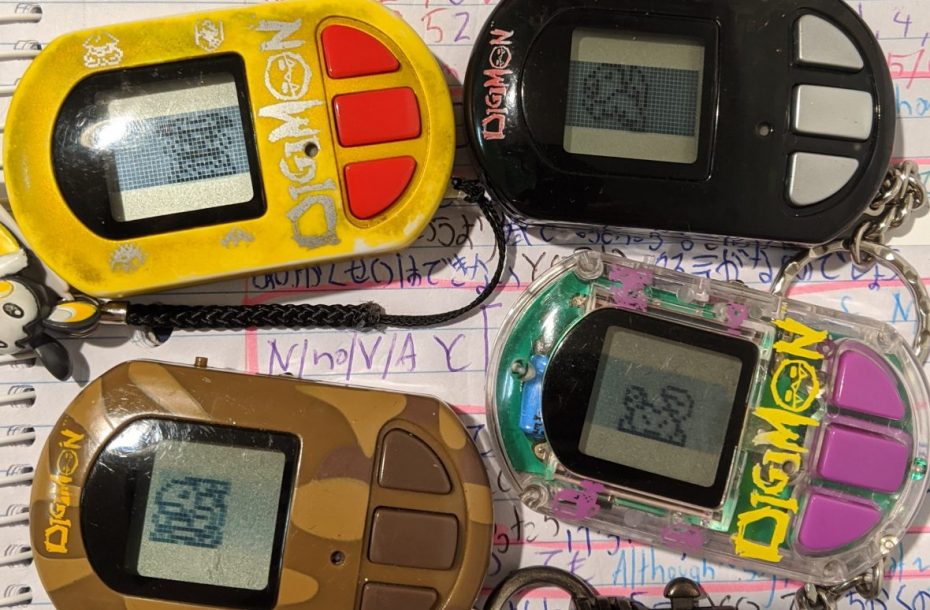
The Version 6
The Version 6, as mentioned earlier in this guide, is another Bandai Asia release that starts off the ‘Pendulum’ roster of Digimon.
The Cycle has a modified Nature Spirits Roster (with a few additions so the slots match the other DMOGs such as Tekkamon being in the same slot as the ‘mame’ or ‘small sprite’ Digimon), but does not contain the ‘Pendulum action’ (shaking), nor does it include the Jogress mechanic and ability to evolve beyond Perfect.
The Version 6 follows the same evolution mechanics as the DMOGs and not the Pendulum Cycle, so evolution only go forward and your Digimon does not revert at the end of each day.
The training on the version 6 is the same as the training in the DMOG version 1.
Jogressing
Of course, since this is related to the PenOG (somewhat), the Cycle introduced evolution. However, each Digimon that could Jogress could Jogress with any Digimon that could Jogress of any level. Meaning that, if you are using a Dcomm or Acomm with 0NL1NE, you only need three codes (vaccine, data, and virus).
And that’s all folks!
Well that’s more or less it for my Digimon Pendulum Cycle Guide, I hope you now know a little bit more about this virtual pet.
However, this guide will always seemingly be a state of work in progress, but it’s more than what was around when I started playing around with these weird and unique virtual pets!
I’ll finish off this guide with a few resources that I either mentioned above or may prove useful if you want some further reading or viewing material about the Cycle virtual pets.
Digimon Pendulum Cycle Guide – Additional Information
Evolution Requirement, Shakes, and other Findings Sheet
My Initial Findings on WithTheWill
My Introduction Video (precursor Digimon Pendulum Cycle Guide)
My Video Review
Cycle Shells on Project DigiShell
Training Comparison Video
Digital Research Project
Digimon 0NL1NE blog post
Do you have a Cycle? Do you like it? Was the Digimon Pendulum Cycle guide useful at all? Let me know!
You can help out the podcast and blog in the following ways:
- Donate via our PayPal
- Nabbing something cool from our Redbubble
- Our Patreon (if you’d like to make more than just a one-off donation)!
- May’s ko-fi account!
- By spreading the word!
And thank you to our supporters on Patreon; Joe, Steven Reeves, Kaida Washi, Chisai, Kyle, Lizmet, Nicholas, MetalMamemon, Sam, Anthony, Keith, SilverHairedFreak25, Magnus, Lucas, Blindman, Jaephus, and Patrick!
Be sure to check us out on our various social media accounts:
